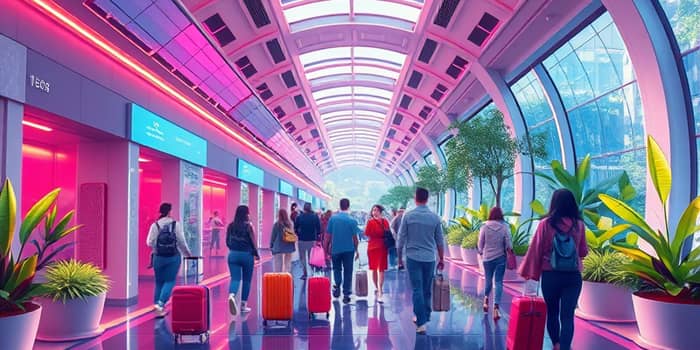
As we stand on the cusp of a new era in tourism, the industry is not only rebounding from recent challenges but also charting innovative paths forward. This deep dive explores the dynamic forces shaping travel and hospitality, offering insights into the trends, numbers, and strategies that will define the sector’s prosperity.
The hospitality market has soared to unprecedented heights, reaching $4.9 trillion in 2024. This monumental figure underscores tourism’s role as a key economic engine, contributing a record-high $11.1 trillion to global GDP, roughly 10% of total output.
From January through September 2024, the world welcomed 1.1 billion travelers—an 11% increase over 2023. Looking ahead, the sector is forecasted to expand at an annual rate of 5.8% between 2022 and 2032, outpacing the global economy’s modest 2.7% growth.
After years of disruption, 2024 marked a full recovery to pre-pandemic travel levels. Occupancy rates, average daily rates, profitability, and RevPAR (revenue per available room) have all rebounded.
Yet the end of recovery signals the dawn of transformation. A confluence of shifting consumer behaviors, rapid technological adoption, and evolving business models is propelling the industry into a bold new phase of innovation.
Travelers today seek experiences that go beyond sightseeing. From wellness retreats to immersive cultural journeys, the sector is diversifying rapidly. Below is a concise summary of the most influential trends:
Tourism’s ripple effects are felt far beyond hotel lobbies. Revenue streams from travelers catalyze infrastructure upgrades, bolster local entrepreneurship, and ensure cultural preservation.
Despite revenue growth, profit margins face headwinds as operating costs surge. In the U.S., RevPAR is set to grow by about 2% in 2025—led by urban markets at 2.8%, with suburbs trailing at 1.3–1.8%.
However, escalating insurance premiums, labor costs, and food prices are expected to compress margins by around 60 basis points next year. External shocks—natural disasters and tighter regulations—could further strain capital investments.
Industry leaders are embracing holistic success metrics that balance profit with social and environmental stewardship. Policies and business strategies now emphasize greener practices and climate action.
Digital transformation—through AI-driven efficiencies and personalized guest experiences—also plays a pivotal role in building resilient, inclusive tourism ecosystems that can weather economic and environmental disruptions.
Asia remains a hotbed of growth, particularly for medical and wellness tourism. Meanwhile, hotels worldwide are adapting to competition from alternative accommodations by optimizing digital presence and reimagining service delivery.
Personalization, safety, and hygiene standards have become decisive factors in traveler choice, pushing operators to innovate in health protocols and customized offerings.
Crafting policies that unite economic growth with environmental care and community benefit is essential. Stakeholders must ensure local communities receive equitable returns, avoiding overtourism and resource depletion.
The future of travel hinges on striking a delicate balance: fostering robust economic growth while championing sustainability, resilience, and inclusivity. Industry players who harness cutting-edge technologies, embrace evolving traveler aspirations, and invest in local communities will lead the way.
As tourism surges toward new frontiers, stakeholders must remain agile, collaborative, and visionary. By weaving together financial acumen, social responsibility, and environmental stewardship, the travel and hospitality sector can soar to unprecedented heights—welcoming every traveler to a more immersive, meaningful, and sustainable world.
References













